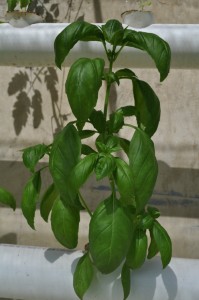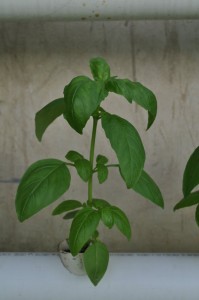Hydroponics: Understanding Nutrient Solutions
In hydroponics, one of the fundamental aspects is the nutrient solution. Let's explain it this way:
In a natural environment, plant roots absorb water and nutrients from the soil through a process called osmosis. The roots release acids that help dissolve the minerals in the soil. Additionally, the roots act as reservoirs for already assimilated products, such as in the case of potatoes. The stem and branches transport the liquids absorbed by the roots, which are known as sap. These substances, absorbed and converted into sap, are ultimately used in the leaves during a process called chlorophyll synthesis, where, together with sunlight, the plant obtains the energy necessary for its life processes.
In hydroponics, everything provided by the soil must be substituted with the nutrient solution. The plant must find all the essential elements in conditions comparable to those in soil, and if we can improve these conditions, even better.
Optimizing Nutrient Supply in Hydroponics
With the above understanding, we can see that in hydroponics, we can not only replicate the minerals present in soil but enhance them significantly. In natural soil, there may be excesses or deficiencies of certain minerals. However, in hydroponics, we have the ability to be precise, ensuring that at each growth stage, the plant receives exactly the minerals it needs, promoting better growth, flowering, or fruiting.
For example, if you are growing basil hydroponically, you will see the plant thriving with improved nutrient intake. The advantage is evident when comparing the same basil plant over time. In just a week and a half, there is noticeable growth due to the effective nutrient delivery through the hydroponic system.
The Essentials of Plant Nutrition
As discussed in related articles on plant nutrition, there are several essential minerals required for plant growth. For those who want to dive deeper into this topic, here are links to articles that provide a comprehensive understanding:
- Plant Nutrition Part 1: Basics
- Plant Nutrition Part 2: Major Elements (Nitrogen, Phosphorus, Potassium)
- Plant Nutrition Part 3: Secondary Elements (Calcium, Sulfur, Magnesium)
- Plant Nutrition Part 4: Trace Elements (Copper, Boron, Iron, Manganese, Zinc, Molybdenum, and Chlorine)
These elements, along with oxygen, hydrogen, and carbon (sourced from water and air), are essential for plant development. In nature, these elements exist as mineral salts, and these same salts are used in hydroponics to prepare the nutrient solution. For instance, magnesium sulfate contains sulfur and magnesium, while monopotassium phosphate contains phosphorus and potassium.
A Basic Nutrient Solution for Beginners in Hydroponics
For those starting out in hydroponics, we present a basic nutrient solution that works effectively. While this is a simple formula, there are more elaborate and specific solutions available, even tailored to different plant growth stages. However, our aim here is to help beginners with a straightforward starting point.
Chemical Formula for Hydroponic Nutrient Solution and Its Preparation (for 100 liters of solution):
- (NO3)2Ca (Calcium Nitrate) — 118 grams
- SO4Mg (Magnesium Sulfate) — 49 grams
- PO4H2K (Monopotassium Phosphate) — 29 grams
Preparation Steps:
- Place each of the salts in separate containers, with 1 liter of water in each.
- Stir well to ensure they dissolve completely.
- When starting the hydroponic system (for example, follow this article to learn how to build a homemade NFT hydroponic system), fill the main tank (if it holds 100 liters) with water.
- Pour in the 3 liters of water containing the dissolved salts from the containers, and your nutrient solution is ready.
The Results: Vibrant, Healthy Plants
With this system, you can achieve vibrant growth, as seen in this beautiful lettuce plant grown in just a few weeks. The rich green color and robust growth are the results of precise nutrient management in hydroponics.
Why Choose Hydroponics? Hydroponics allows growers to bypass the variability of soil conditions, providing plants with an ideal environment for optimal growth. By controlling the nutrient levels, you can ensure that plants receive exactly what they need, resulting in faster growth rates, healthier plants, and often better yields. Additionally, hydroponics reduces water usage, making it a more sustainable approach to cultivation.
Starting with a simple yet effective nutrient solution, you can explore the benefits of hydroponics, whether you are growing herbs, leafy greens, or other plants. With the right setup and understanding, your plants can thrive, leading to a rewarding and productive growing experience.

